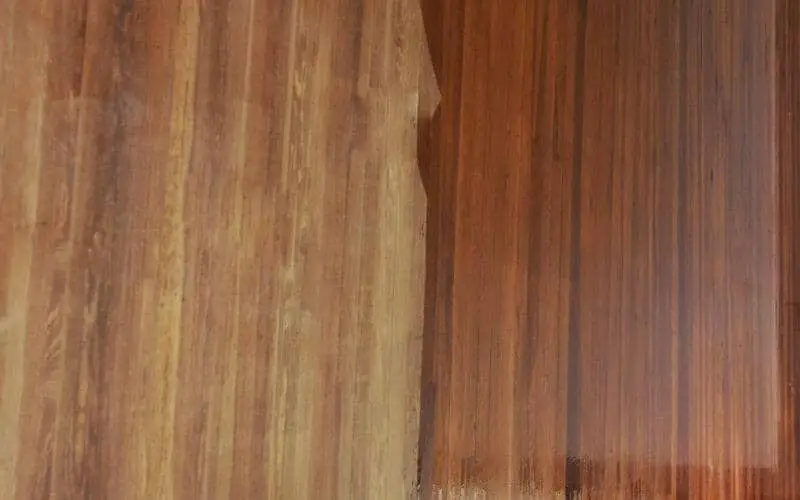Knowing if your hardwood floors are sealed or unsealed is quite important. To a large extent, it will determine how you care for and clean your floor.
Sealed vs. unsealed hardwood floors, which is better? Without a doubt, sealed floors are way better than unsealed floors. Recently, there has been more shift towards sealed hardwood floors because of their perceived benefits.
Sealed floors are painted with surface sealants which protect them against damage. In contrast, unsealed floors are unfinished floorboards that are quite susceptible to damage.
This post will highlight some major differences between these two floors and how to clean them.
Read: How do I know if my hardwood floors are sealed
What are Sealed Hardwood Floors?
Table of Contents
Sealed hardwood floors are also referred to finished hardwood floors because they’ve been treated with surface-sealants or penetrating sealants.
The sealants can be water, oil, or solvent-based formulations. Depending on your preference, you can go with water-based sealants that penetrate the wood or oil-based sealants that cover the surface.
Note that not all sealed hardwood floors are treated with sealants; some are simply coated with wax or varnish.
Read: How to clean sealed wood floors
What are Unsealed Hardwood Floors?
As the name suggests, unsealed hardwood floors are floorboards that are not treated with sealants or coated with wax or varnish.
Leaving your hardwood floor unsealed makes it prone to damage and spoilage. While unsealed hardwood floors have a certain appeal to them, most modern homeowners prefer sealed hardwoods because of their added benefits.
Unsealed hardwood floors are usually found in older homes and apartments; most contemporary homes prefer sealing their hardwood floors.
Read: How to clean unsealed wood floor
Sealed Vs. Unsealed Hardwood Floors
We want to emphatically state that sealed floors are way better than unsealed floors. While it can be argued that unsealed floors add rustic beauty to the home, such rustic décor can be achieved by easily staining the floor with color the gives out a rustic vibe.
Now, let’s highlight some core differences between sealed and unsealed floors:
1. Sealed Floors Has a Glossy Look to It
Remember that we mentioned that sealed floors are either treated with sealants or coated with wax or varnish. For floors treated with oil-based sealant, they have a glossy look, especially a few days after applying the sealant. The glossiness is more pronounced when the floor is coated with wax or varnish.
To achieve such a shiny look with unsealed floors, you may have to clean with olive oil and vinegar mixture.
2. Unsealed Floors Shouldn’t Be Installed in All Rooms
Sealed floors have the advantage of being installed in all rooms, even in areas with high levels of moisture, like the kitchen and bathroom. This does not apply to unsealed floors that can be easily damaged by excessive moisture.
Also, sealed floors can be installed in high traffic areas and can withstand such weight; this does not apply to unsealed floors.
3. Sealed Floors Might have a Different Color
This is true for sealants that have colors in them. Some sealers are clear, while others have a color pigment added to them. This can create a certain look or effect prior to applying a finish and/or after applying a stain.
Unsealed floors just have the natural colors they come with.
4. Sealed Floors are Easier to Clean
When you check the cleaning procedure for unsealed floors, you discover that they are quite difficult to maintain and clean. For instance, unsealed floors should be cleaned with soft-bristled brooms and dry-mopped with vinegar diluted in water.
5. Not All Floor Wood Cleaner Can Be Used on Unsealed Floors
Contrary to what might be marketed, most commercial wood floor cleaners are not suitable to be used on unsealed floors. To be on the safe side, use vinegar diluted in water to clean unsealed floors. And make sure there is no moisture left behind after cleaning.
Read: How to seal unfinished wood floor
Tips for Caring for Unsealed Wood Floors
As already mentioned, unsealed wood floors are more fragile and susceptible to damage. Thus, you need to take extra care when dealing with unsealed floors. Below are some ways to care for unsealed floors:
1. Protect unsealed floors with rugs and carpets, especially in areas with high traffic.
2. Place mats at the entrance to avoid carrying in soils under your soles.
3. Clean any spills as soon as possible – preferably with a microfiber cloth.
4. Do not steam clean unsealed hardwood flooring.
5. Sweep regularly with a soft bristle broom to remove dirt particles that can scratch and sand the wood.
Read: How to remove water stain from wood
Conclusion
From all indications, we can deduce that sealed floors are way more advantageous than unsealed floors. If your reason for choosing unsealed floors is because of its rustic vibe, such vibes can easily be achieved by sealing your hardwood floors with a colored sealant.
We hope this post was able to highlight some major differences on sealed vs. unsealed hardwood floors.

